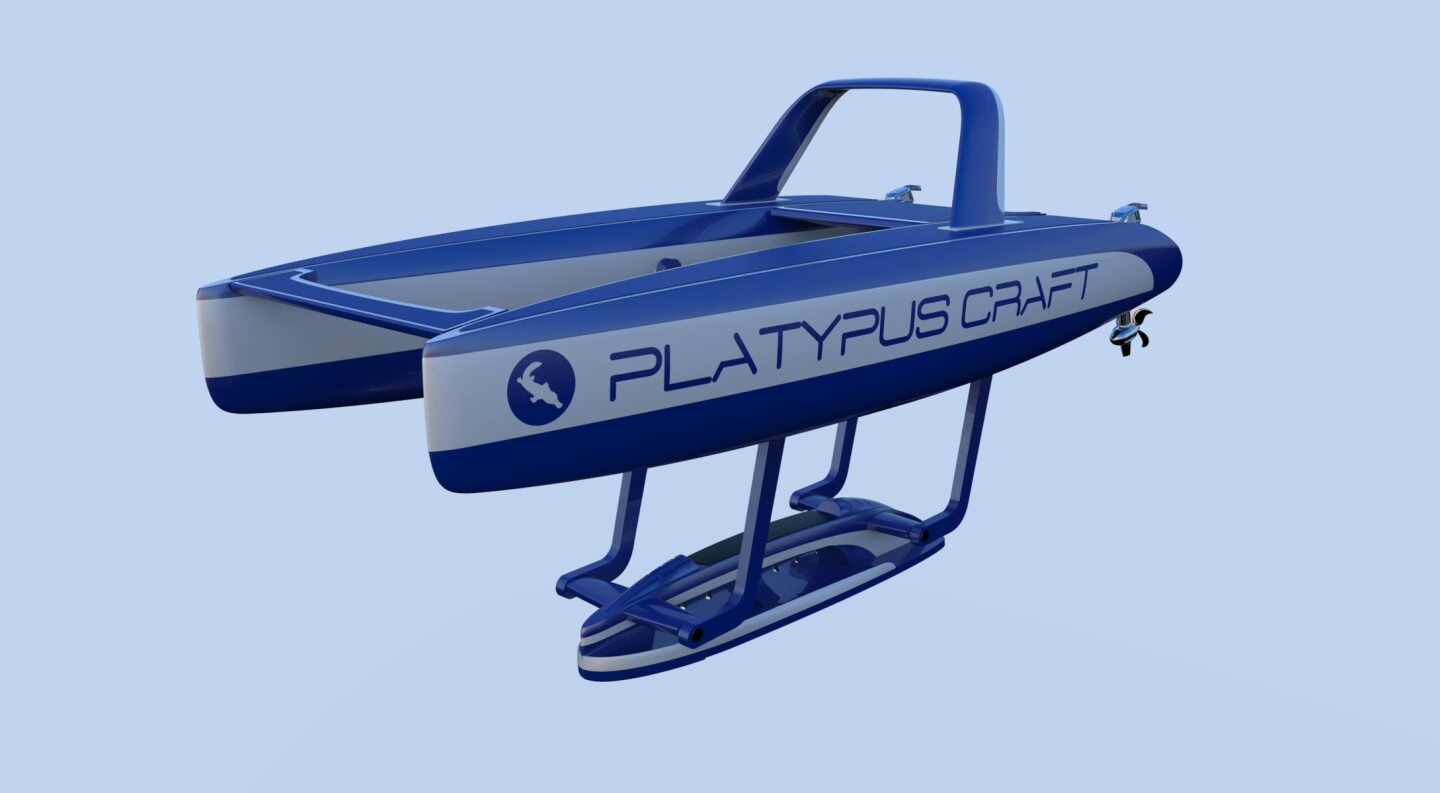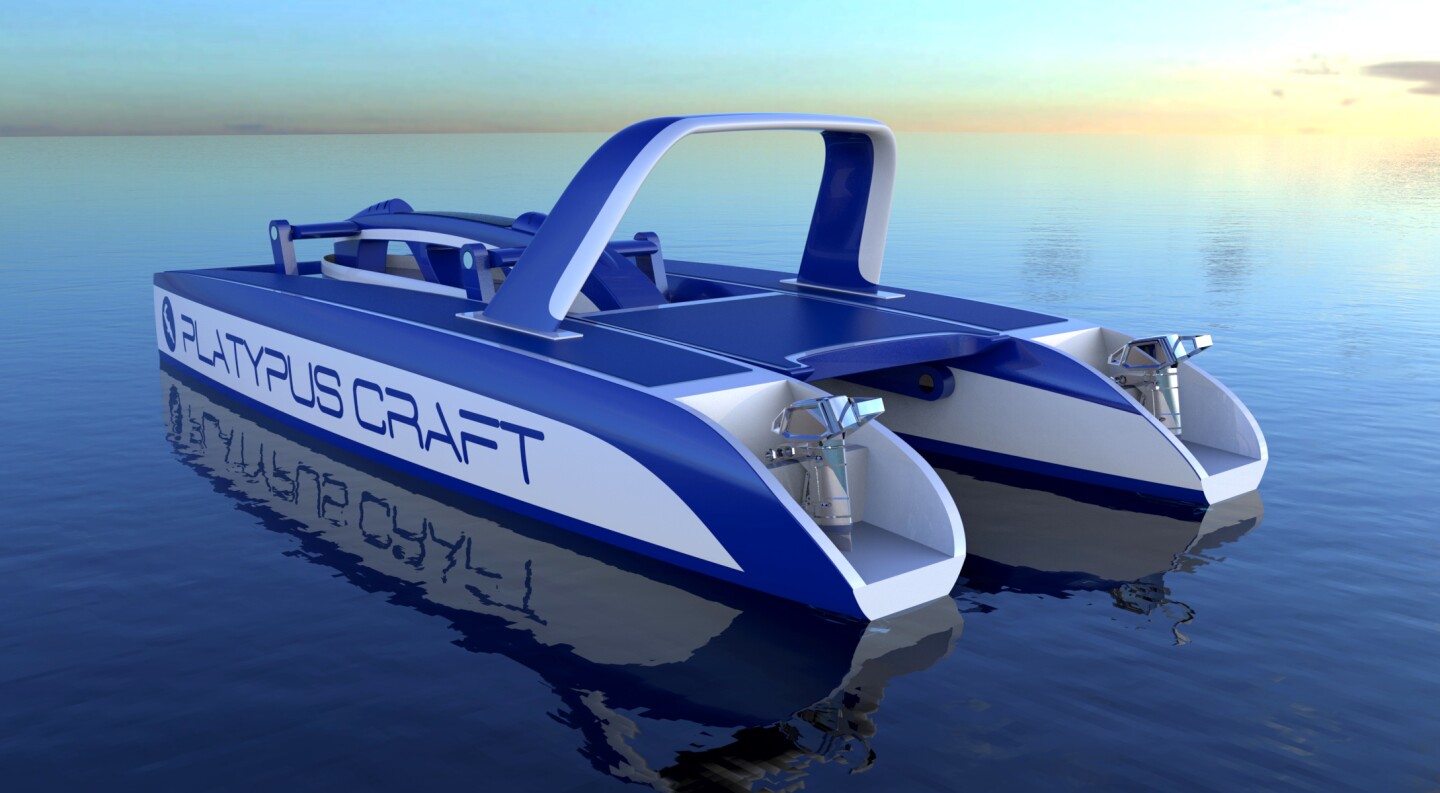After four years of development and months of prototype testing, Platypus founder Francois Alexandre Bertrand and his team have decided on the final design for their Platypus underwater exploration vehicle that will be launched next year. Aside from sporting a more polished look, the final production version also includes a number of newly-announced features.
Designed by French naval architectural firm Van Peteghem Lauriot Prévost (VPLP), the latest design builds on knowledge gained from prototype testing this past year. The final design measures 19 ft (5.7 m) long with an 8 ft (2.5 m) beam and weight (including batteries) of 1,500 lb (700 kg), which is a little smaller than the prototype to ensure it can be transported in a 20 ft shipping container.
The twin hulls have also been slightly upsized, which the company says provides improved surface navigation capabilities. These also contain the built-in electric air compressor – or "hookak" – to supply oxygen to passengers when beneath the waves. The craft accommodates up to four passengers, with either three positioned on the central pod (provided their total weight is less than 440 lb /200 kg) and one on the rear platform, or two on each.

The rear platform, which comes as standard on all models, is now also where the steering system is located. However, moving the steering system to the central pod is available as an option, with the optional underwater visualization system consisting of a waterproof display and surface camera with 360-degree viewing angle giving passengers the ability to maneuver the craft while underwater. It is also possible to have two steering systems installed to be used concurrently.
Other options include a central platform (or sundeck), digital periscope, submarine lights, underwater cameras, GPS, Wi-Fi, and "Ocean Reef" mask submarine communication system.

The watercraft is still powered by two outboard motors, with customers offered a choice of three different powertrains. Two of these are electric, with the 2 x 2 kW Torqeedo electric motor model powered by an 8 kW Absorbed Glass Mat (AGM) battery providing a range of 25 miles (40 km) and a maximum speed of 5 knots (5.7 mph/9 km/h) in surface navigation mode, while the 2 x 2.4 kW model is powered by a 10.5 kW lithium ion battery and gets a range of up to 30 miles (48 km) and top speed of 10 knots (11.5 mph/18 km/h).
The lone ICE-powered model packs 2 x 9.9 hp 4-stroke Mercury engines for a range of 50 miles (80 km) and a maximum speed of 14 knots (16 mph/30 km/h). Although not pictured in the images included with this story, the craft also comes equipped with propeller safety cages as standard.
The Platypus will be CE certified as a "standard boat" and will be available from next year for prices starting from €50,000 (US$69,000). Platypus is accepting pre-orders from this month.
The development of the Platypus is shown in the following 10-minute video and check out the image gallery for a look at the final design of the watercraft.
Source: Platypus


















